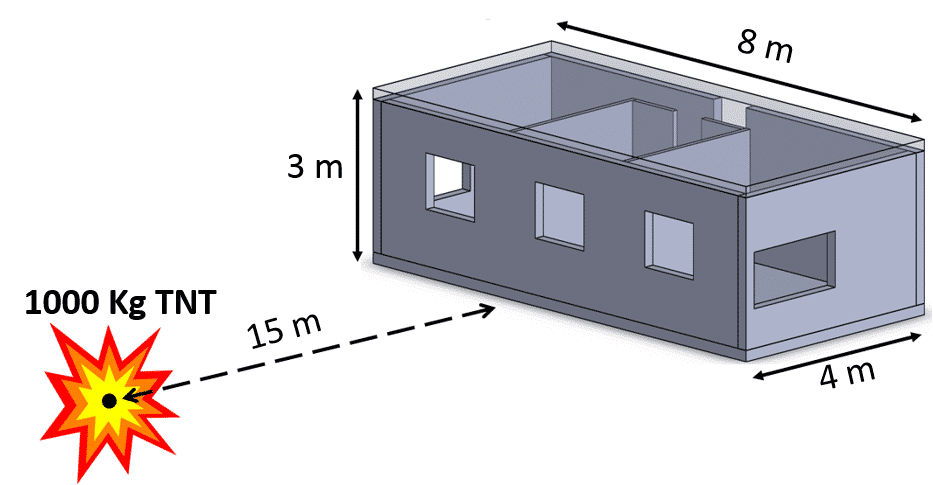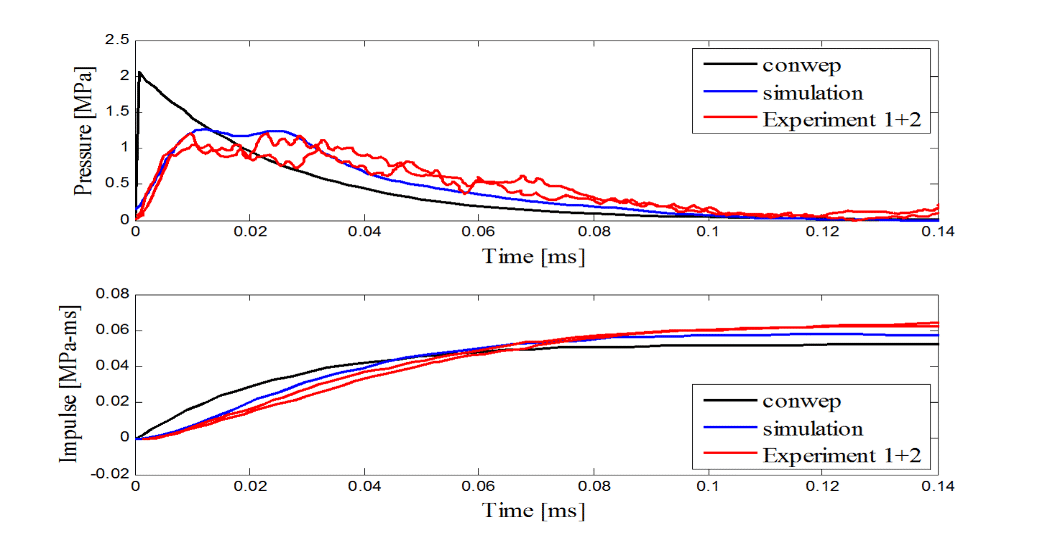The numerous benefits of small scale laboratory experiments include shorter preparation and execution times, cheaper materials, usage of measurement devices that cannot be employed in field tests, and a compactness that often allows for more controlled test conditions and provide high repeatability. The exploding wire technique has been employed successfully in the simulation of small blast-structure interactions (Ram & Sadot, 2012). By discharging a large capacitor on a thin piece of wire, a scaled-down explosion can be simulated in laboratory conditions. TNT equivalents between 60-100 mg were achieved, though the requirement to simulate larger blasts, such as from the detonation of a 1-ton TNT equivalent bomb as presented in Figure 1 has stimulated efforts to pursue higher scaled-down TNT equivalents in the exploding wire facility. Various methods have thus far been experimented to achieve the desired higher values, such as metallurgic adjustments and the design of additional auxiliary structures. Numerical analysis using the LS-DYNA software has offered both validation of progress and guidance in choosing a course of exploration. In Figure 2, the measurements from tests with a rectangular tunnel structure are presented, along with comparisons to CONWEP and a numerical simulation. Further modifications to the existing wire technique will be presented, in addition to a summary of results and conclusions.


Ram, O., & Sadot, O. (2012). Implementation of the exploding wire technique to studyblast-wave-structure interaction. Experiments in Fluids, 53(5), 1335-1345. doi:10.1007/s00348-012-1339-8

